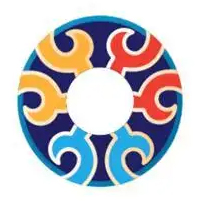Cloisonné: the calling card of Chinese culture.
One, "Form": Mold Making
The shape of Cloisonné originates from mold making. It is typically made with a copper base, although some pieces use gold or silver bases. Common forms include vases, jars, cups, incense burners, boxes, bowls, and various unique shapes. Some works combine techniques such as jade carving and filigree inlay, making them even more precious.
Two, "Pattern": Wire Cloisonné
The decorative motifs and patterns of Cloisonné are created through wire cloisonné, using flat wires of various thicknesses according to the design requirements. Fine, rounded, and neat wire cloisons are important standards to achieve. Common patterns include "longevity," "cranes," "interlacing branches and lotus," conveying auspicious and beautiful meanings.
Three, "Color": Enamel Application
After wire cloisonné, enamel is applied through multiple firings to create a richly colored surface. The process of enamel application requires attention to the pattern's regularity and artistic presentation of gradations and lively color variations. Clear, vibrant enamel colors with distinct layers are the fundamental standards for appreciation.
Four, "Shine": Polishing and Gilding
After enamel application and firing, the basic style of Cloisonné artworks is achieved, and what remains is polishing and gilding. The artworks need to be repeatedly supplemented with enamel colors and polished to meet high-quality standards. Gilding protects the surface of the artwork, making it more durable and aesthetically pleasing. This results in a colorful and translucent enamel surface, resembling glass.
Cloisonné art combines the magnificence of bronze ware, the elegance and allure of porcelain, and the meticulousness of painting and calligraphy. As a former court art and current intangible cultural heritage, Cloisonné not only represents exquisite objects but also embodies wisdom and beauty.

